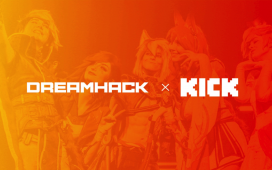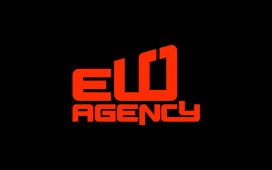Mentioned in this article
In 2019, Tennis Australia held its first AO Summer Smash esports event as part of its program of entertainment events taking place alongside the Australian Open grand slam tennis tournament.
It was a pleasant surprise to see a traditional sports organization exploring the potential of esports as part of its schedule, but it left many wondering if it was simply a one-off way to grab a little of that Fortnite attention at the height of its powers.
In 2020, Tennis Australia came back for more. The AO Summer Smash featuring Fortnite returned, with a bigger prize pool and an invitational format that brought 50 overseas Fortnite competitors from around the world – North America, the EU, Brazil, Japan, and China – to compete against the top Oceanic competitors, with a Pro-Am competition for charity on day one and the main solo competition on day two.
“The response to the first one was really good within Tennis Australia, the company, and within the community and with spectators. So pretty much from day one we were looking at what we’d do for the next one and here we are,” Mark Reidy, events organizer at Tennis Australia, told The Esports Observer.
“This is an audience that would not be here at the Australian Open without this event. We did research last time around and 70% of attendees hadn’t been to the Open before,” Reidy says. “So for us it’s about bringing this audience into the venue that may have not come here before, may have never seen the tennis before. The men’s final is on today so maybe they’ll stick around and watch that on site.”

Talking to Reidy, it’s clear he has a good grasp of the value of this event for the Australian Fortnite competitive community too. He points out that Oceanic region players can’t easily compete against North American and European competition due to server locations and latency. He feels excited to bring those players to Australia so top locals get exposure to quality international talent.
He also sees that, just like the tennis, local fans get even more excited about supporting Australian players when they’re up against overseas competition.
“To draw the parallels back to the Open, when there’s an Australian on center court the crowd gets behind them,” he said. “We have these big players here that everyone wants to see but then we have Lachlan and MrFreshAsian win the pro-am [on Saturday] and the crowd loves it. It was fantastic to see them get up and everyone here was excited for that too.”
There are two main stadium tennis courts at Melbourne Park. Rod Laver Arena, seating 15,000, and Margaret Court Arena, seating 7,500. Before the AO Summer Smash launched in 2019, the smaller of these was used for finals practice but was largely empty once the draw narrowed into finals week.
Holding this added event, according to Reidy, is both a great use of their facilities but also a boost to the atmosphere of the finals weekend.

“It just changes the feeling of finals weekend. We’re able to open the gates earlier on Saturday and Sunday and have more patrons coming in and a bigger attendance overall,” Reidy said. “Previously gates opened at 4pm and people just wandered into an empty venue. Now those same people are coming in but now there’s kids, there’s excitement, there’s a lot of hype.”
While Tennis Australia partners with ESL and Epic Games to put on the AO Summer Smash, it also uses the skills of its other event partner, Gravity Events. Reidy says if it wasn’t for the company’s existing access to technology and broadcast facilities as part of the Australian Open itself, it wouldn’t be putting on an esports tournament.
“We’ve tried to stick to what our strengths are. We run events around the world,” says Reidy. “The LED screens are here. The broadcast is here. So much is here already that allows us to do this.”
Reidy suggests that anyone else looking at how they could come in as outsiders and get involved in esports should think about two key things.
“Have an understanding of what your strengths are and what you want to get out of it. What works for one might not work for another.”

Talking to Josh Inman, operations manager at ESL Australia, he points out that while ESL is there to run the core of the Fortnite tournament and its broadcast, a majority of the heavy lifting has been organized by Tennis Australia.
“They’ve done all the legwork on the planning. They’re very experienced putting on large scale events together – as you can see from the scale of the Australian Open,” Inman says. “There’s a lot of planning, of course, but then it comes together quickly and execution happens in a short amount of time. When we put the two teams together it’s crazy what we’ve been able to pull off.”
Inman also sees the value for all of Australian esports to have Tennis Australia now setting up an annual cycle for hosting a major tournament as part of the Australian Open entertainment program.
“It’s exciting when you get a huge non-endemic partner like Tennis Australia wanting to dip their toes into esports and we were so excited to work with them last year,” says Inman. “It speaks to the success of the event and its value to tennis that it was back again. I’m so glad they saw that value and the community, of course, loves it. You only have to look at how the fans react to know how positive it is.”














